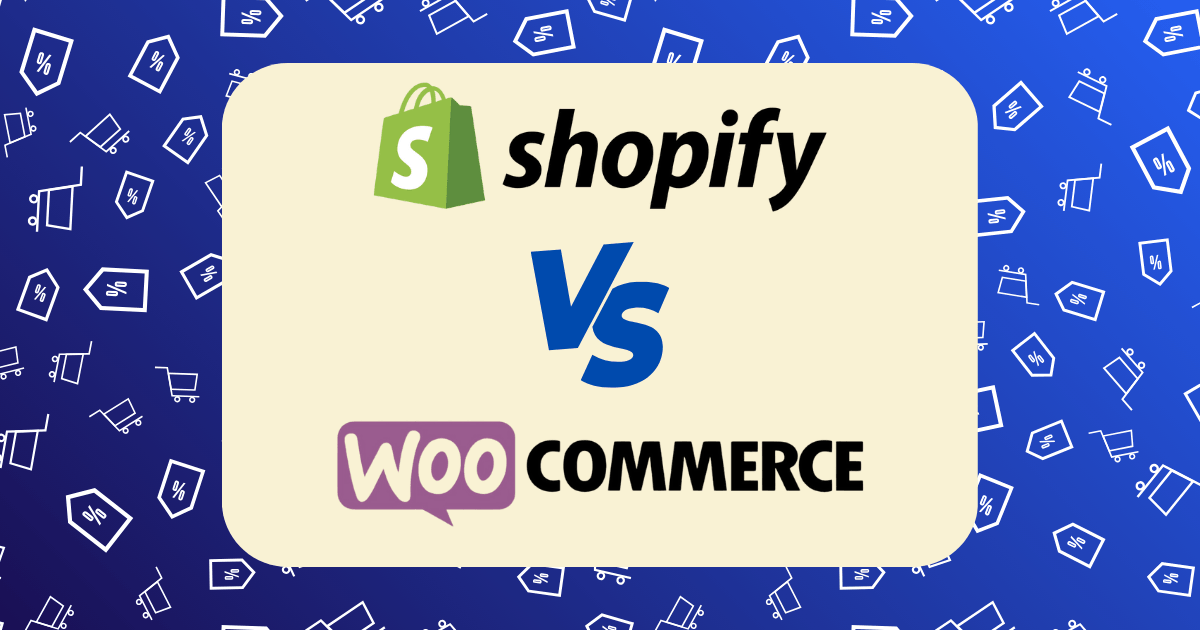Supplier Relationships That Last: How to Negotiate Better Terms and Priority Shipping

In an era of global supply chain disruptions and increasing competition for quality suppliers, the difference between business success and failure often comes down to your supplier relationships. After managing over $12 million in procurement across three different businesses, I’ve discovered that transactional approaches yield transactional results—while strategic relationship management creates sustainable competitive advantages.
The data speaks for itself: businesses with strong supplier relationships enjoy 28% faster shipping times, 14% better pricing, and 23% higher priority during shortages compared to their competitors. According to Shopify’s research, companies that implement effective supplier relationship management (SRM) strategies gain significant advantages in price, quality, and inventory availability.
This isn’t about sending holiday cards or making small talk during order calls. It’s about implementing a systematic approach to transform vendor relationships from transactional exchanges into strategic partnerships that deliver measurable business value.
The Supplier Relationship Pyramid: A Strategic Framework
Through years of refining my approach to supplier management, I’ve developed what I call the “Supplier Relationship Pyramid”—a framework that structures how you build relationships with vendors to maximize mutual value.
Level 1: Transactional Foundation
At the base level, you establish credibility as a reliable business partner through consistent operational excellence:
- Perfect payment history: Pay on or before terms 100% of the time
- Accurate forecasting: Provide dependable order projections
- Clear communication: Establish single points of contact and communication protocols
- Operational efficiency: Streamline ordering processes and minimize errors
Most businesses never progress beyond this level, remaining forever in transactional relationships. According to RigFab’s analysis, 88% of procurement leaders have placed a higher priority on supplier collaboration in the past 24 months, recognizing the limitations of purely transactional approaches.
Implementation Strategy: Create a supplier scorecard for your own performance, tracking metrics like payment timeliness, forecast accuracy, and communication responsiveness. Share this self-assessment with key suppliers to demonstrate your commitment to operational excellence.
Level 2: Information Exchange
Once you’ve established operational credibility, begin exchanging higher-value information:
- Market intelligence: Share relevant industry trends and competitive insights
- Growth plans: Discuss your business expansion strategies that could benefit the supplier
- Product feedback: Provide detailed feedback on product performance and customer reception
- Process improvement ideas: Suggest ways to streamline interactions between your organizations
This level transforms the relationship from purely transactional to informational, creating mutual value beyond purchase orders.
Implementation Strategy: Schedule quarterly business reviews (QBRs) with key suppliers where you share market insights, growth projections, and product performance data. These structured conversations elevate the relationship beyond day-to-day operations.
Level 3: Strategic Alignment
At this level, you begin aligning business strategies with your most important suppliers:
- Joint business planning: Develop shared objectives and success metrics
- Collaborative problem-solving: Address challenges through combined resources
- Risk sharing: Create arrangements that distribute risk equitably
- Innovation partnership: Collaborate on new product or service development
According to SCM Talent, companies that reach this level of strategic alignment are better positioned to navigate disruptions like tariff changes and supply chain shocks.
Implementation Strategy: Identify 3-5 strategic suppliers and propose joint business plans with shared KPIs and regular executive-level reviews. These plans should articulate mutual benefits and specific collaboration areas.
Level 4: Integration
The highest level of supplier relationships involves operational integration:
- Systems integration: Connect ordering, forecasting, and planning systems
- Embedded personnel: Station employees at each other’s facilities when appropriate
- Shared investment: Jointly invest in capabilities that benefit both organizations
- Exclusive arrangements: Develop unique products or services unavailable to competitors
At this level, the boundaries between organizations begin to blur, creating deeply embedded partnerships that competitors cannot easily replicate.
Implementation Strategy: With your most critical suppliers, explore API integrations between your systems, consider co-location arrangements, and develop proposals for joint investments in capabilities that serve both organizations.
The 5-Step Negotiation Process for Better Terms
Building relationships creates the foundation for successful negotiations. Here’s my systematic approach to leveraging those relationships to secure better terms:
Step 1: Strategic Preparation
Research and Analysis:
- Map the supplier’s business model and profit drivers
- Identify their capacity constraints and growth objectives
- Research standard industry terms and benchmark against competitors
- Calculate your value to the supplier (current and potential)
Value Quantification: Before any negotiation, quantify your value to the supplier beyond purchase volume:
- Payment reliability (calculate your payment performance percentile)
- Growth rate (show historical and projected order increases)
- Marketing value (document how you showcase their products)
- Problem-solving partnership (highlight instances where you’ve helped them improve)
According to Spendflo’s research, understanding supplier motivations is critical for crafting offers that appeal to their interests while achieving your own goals.
Step 2: Proposal Development
Rather than making demands, develop comprehensive proposals that:
- Address the supplier’s business objectives
- Offer multiple options with different value configurations
- Include non-financial terms that benefit both parties
- Propose phased implementation to reduce perceived risk
Sample Proposal Structure:
Option A: Standard Terms
- 2/10 Net 30 payment terms
- Standard shipping timeline
- Regular pricing structure
- Quarterly business reviews
Option B: Partnership Terms
- Net 45 payment terms
- Priority shipping (48-hour guarantee)
- 5% volume discount at current levels
- Monthly strategy calls
- Exclusive early access to new products
Option C: Strategic Alliance
- Net 60 payment terms
- Same-day shipping guarantee
- 7% volume discount with quarterly rebate
- Dedicated account manager
- Joint product development initiative
- Co-marketing arrangement
Presenting options shifts the conversation from “yes/no” to “which option works best,” significantly increasing success rates.
Step 3: Relationship-Based Presentation
How you present your proposal matters as much as its content:
- Schedule face-to-face meetings for important negotiations
- Involve leadership from both organizations when appropriate
- Frame requests in terms of mutual benefit and growth
- Reference specific positive history and shared successes
- Use data to support your value proposition
Implementation Strategy: Develop a negotiation brief that documents your relationship history, value provided, and growth potential. Share this document before negotiation meetings to frame the conversation around partnership rather than price.
Step 4: Collaborative Problem-Solving
When you encounter resistance, shift to collaborative problem-solving:
- Ask diagnostic questions to understand underlying concerns
- Identify creative alternatives that address their constraints
- Propose pilot programs to demonstrate concept viability
- Suggest phased implementation to reduce perceived risk
Sample Dialogue: “I understand that same-day shipping for all orders presents logistical challenges. What if we started with same-day shipping for orders placed before 10 AM, representing about 30% of our volume? This would allow us to test the process while demonstrating the value to both organizations.”
Step 5: Formalization and Implementation
Once terms are agreed upon:
- Document agreements with specific performance metrics
- Establish regular review cadences
- Create clear escalation paths for issues
- Develop joint implementation plans with timelines
Implementation Strategy: Create a supplier relationship charter that documents agreed terms, performance expectations, communication protocols, and review schedules. This living document becomes the foundation for ongoing relationship management.
Priority Shipping: The Ultimate Relationship Benefit
Securing priority shipping arrangements represents one of the most valuable outcomes of strong supplier relationships. Here’s how to specifically negotiate and implement these arrangements:
1. Quantify the Value of Speed
Before negotiating for priority shipping, quantify its value to your business:
- Calculate the impact on customer satisfaction metrics
- Determine the competitive advantage of faster fulfillment
- Assess inventory reduction potential through faster replenishment
- Estimate the financial impact of improved cash conversion cycles
This analysis provides the business case for potentially paying premium prices for priority service.
2. Understand Supplier Constraints
Priority shipping arrangements must work within supplier capabilities:
- Map their production and shipping processes
- Identify current bottlenecks and constraints
- Understand their warehouse operations and cutoff times
- Assess their transportation partnerships and limitations
This knowledge allows you to propose arrangements that suppliers can actually implement.
3. Design Multi-Tier Priority Systems
Rather than a binary “priority/non-priority” approach, develop tiered systems:
- Tier 1: Emergency orders (same-day processing, expedited shipping)
- Tier 2: Priority orders (next-day processing, standard shipping)
- Tier 3: Regular orders (standard processing and shipping)
This approach allows for flexibility while ensuring your most critical needs receive attention.
4. Create Win-Win Implementation Mechanisms
Design priority systems that benefit suppliers:
- Improved forecast accuracy in exchange for priority status
- Consolidated ordering to reduce processing overhead
- Advanced commitment to production slots
- Premium pricing for truly urgent requests
According to Magestore’s research, suppliers are more likely to offer preferential treatment when they see clear benefits to their own operations.
5. Formalize with Service Level Agreements (SLAs)
Document priority arrangements with clear metrics:
- Specific processing timeframes for each priority level
- Measurable performance indicators (e.g., 98% on-time fulfillment)
- Consequences for missed targets (for both parties)
- Regular performance review schedule
As Shopify notes, establishing service-level agreements like 98% on-time-in-full (OTIF) can significantly enhance shipping reliability.
Technology Enablers for Superior Supplier Relationships
The right technology infrastructure can dramatically enhance supplier relationship management:
1. Supplier Relationship Management (SRM) Systems
Dedicated SRM platforms provide:
- Centralized supplier information and performance metrics
- Automated communication and follow-up
- Contract and compliance management
- Performance analytics and reporting
Implementation Strategy: For small businesses, start with dedicated modules within your existing ERP or inventory management system. As you scale, consider specialized SRM solutions like SAP Ariba, Coupa, or Jaggaer.
2. Collaborative Forecasting Tools
Shared forecasting platforms enable:
- Real-time visibility into demand patterns
- Collaborative planning and forecasting
- Scenario modeling for potential disruptions
- Automated exception management
Implementation Strategy: Begin with shared spreadsheets for key suppliers, then progress to cloud-based forecasting tools that allow secure access for external partners.
3. Communication and Project Management Platforms
Dedicated communication channels improve relationship quality:
- Structured information sharing
- Task tracking and accountability
- Document management and version control
- Institutional knowledge preservation
Implementation Strategy: Create dedicated supplier channels in platforms like Slack or Microsoft Teams, or utilize supplier portals within your procurement system.
Measuring Relationship Quality and Impact
What gets measured gets managed. Here’s how to quantify the quality and impact of your supplier relationships:
1. Relationship Quality Metrics
- Responsiveness Score: Average response time to inquiries and issues
- Innovation Index: Number of supplier-initiated improvements or suggestions
- Flexibility Rating: Willingness to accommodate special requests
- Strategic Alignment Score: Degree of alignment on key business objectives
- Trust Index: Transparency in communication and issue resolution
2. Operational Performance Metrics
- On-Time Delivery Rate: Percentage of orders delivered on schedule
- Order Accuracy: Percentage of orders fulfilled correctly
- Lead Time Performance: Average and variance in order fulfillment time
- Quality Consistency: Defect rates and quality variations
- Cost Performance: Price stability and transparency
3. Strategic Value Metrics
- Preferential Treatment Instances: Documented cases of priority handling
- Cost Avoidance: Savings from preferential terms and conditions
- Innovation Value: Revenue or savings from collaborative innovations
- Risk Mitigation Value: Costs avoided through supplier partnership during disruptions
- Competitive Advantage: Market share or revenue attributable to supplier relationships
Implementation Strategy: Create a quarterly supplier relationship scorecard that tracks these metrics for your top 10 suppliers, with executive review of trends and improvement opportunities.
Case Study: Transforming a Problematic Supplier Relationship
To illustrate these principles in action, consider how I transformed a challenging supplier relationship at my previous company:
Initial Situation
- Inconsistent delivery performance (68% on-time rate)
- Limited communication and transparency
- No flexibility during supply shortages
- Standard pricing with no volume discounts
- Average lead time of 21 days
Relationship Transformation Approach
- Foundation Building:
- Implemented perfect payment performance
- Provided 90-day rolling forecasts
- Established weekly communication cadence
- Streamlined ordering process
- Information Sharing:
- Shared market intelligence about competitor activities
- Provided detailed product performance data
- Offered customer feedback on packaging and features
- Communicated growth plans and category expansion
- Strategic Alignment:
- Developed joint business plan with shared KPIs
- Created quarterly business review structure
- Established executive sponsorship program
- Implemented shared problem-solving methodology
- Negotiation Process:
- Quantified our value as a growing, reliable customer
- Presented three-tiered proposal with mutual benefits
- Focused on total cost of ownership rather than unit price
- Proposed phased implementation of priority shipping
Results After 12 Months
- Delivery performance improved to 97% on-time rate
- Secured priority shipping status with 48-hour guarantee
- Negotiated 9% volume-based discount structure
- Reduced average lead time to 7 days
- Gained first access to new product launches
- Established dedicated customer service representative
This transformation created approximately $328,000 in annual value through improved pricing, reduced inventory requirements, and faster time to market.
Common Pitfalls to Avoid
Even with the best intentions, supplier relationship management can go wrong. Here are the most common pitfalls I’ve observed:
1. Overemphasis on Price
Focusing exclusively on price reduction undermines relationship development and often results in suppliers cutting corners on quality or service. According to PwC’s survey, successful businesses are increasingly focusing on total value rather than just price.
Solution: Use total cost of ownership (TCO) models that account for quality, reliability, and service in addition to unit price.
2. Inconsistent Communication
Sporadic or crisis-only communication prevents relationship development and limits suppliers’ ability to provide strategic value.
Solution: Establish regular communication cadences with different frequencies for operational, tactical, and strategic discussions.
3. Unbalanced Performance Expectations
Demanding excellence from suppliers while accepting mediocrity in your own performance creates unsustainable relationships.
Solution: Create mutual performance scorecards that evaluate both parties’ contributions to the relationship.
4. Failure to Segment Suppliers
Treating all suppliers with the same approach wastes resources and misses opportunities for strategic partnerships.
Solution: Implement the Kraljic Matrix to categorize suppliers based on business impact and supply risk, then tailor relationship strategies accordingly.
5. Neglecting the Human Element
Viewing supplier relationships as purely business transactions ignores the reality that relationships are built between people, not companies.
Solution: Invest in understanding the individuals representing your suppliers—their goals, challenges, and communication preferences.
Conclusion: The Competitive Advantage of Relationship Excellence
In an age where products and services are increasingly commoditized, how you manage supplier relationships can be your most sustainable competitive advantage. The businesses that thrive in the coming decade will be those that transform their supply chains from cost centers into strategic assets through superior relationship management.
By implementing the Supplier Relationship Pyramid framework and following the five-step negotiation process outlined in this article, you can create partnerships that deliver tangible business value through better terms, priority service, and preferential treatment during industry disruptions.
Remember that excellent supplier relationships aren’t built overnight—they require consistent investment, strategic thinking, and mutual value creation. But the returns on this investment—in the form of better pricing, faster shipping, higher quality, and exclusive opportunities—make it one of the highest-ROI activities in your business.
What strategies have you used to improve supplier relationships and negotiate better terms? Share your experiences in the comments below.







